|
Project 2014
THIS ART ∞ ∞ Generation APPS
das Netz der lebenden Gestalt . the net of the living Gestalt [Frei Otto]
The 25th anniversary exhibition of KUNST+PROJKTE Sindelfingen e. V. takes up new movements relevant to artistic experiences today. “in Orbit,” wikipedia Cloud City, that utopian construct of Tomás Saraceno, and those digital montages of net activists, whose protagonists are not people, but rather images, technologies, political systems: they stand for the growing interest in the discourse of a young Generation APPS, who access concepts of renowned international artists using the means and practices with which they are familiar.
The network structures substantiate the coalescing of art, science,, and technology. Generation APPS is juxtaposed with works of the conceptual art of the nineteen-sixties. The exhibition This Art makes reference to the dialogue between Lawrence Weiner and Ulrich Rückriem in the public space of the town of Sindelfingen of 1989, enriched and expanded by the today outstanding position of Thomas Ruff. This results in a strong reflection between the stringent concepts of modern art and the increasing use of algorithmic language and the digital reformatting of the artistic language of the young generation today.
Science disenchanted? Quite the contrary! The most recent images of Thomas Ruff are created completely on the computer. They show objects built using 3D technology, which are simulated on the computer with the highest resolution possible. The brilliant images call to mind the historical photograms of the nineteen-twenties (László Moholy-Nagy), but they are not only very much larger, but also in colour. “I wanted to break a record and make the largest photogram in the world“, Ruff commented with a touch of irony. What is however more significant is that the incidence of light, depth of field, etc. are generated with technology. “It’s a bit like in Plato’s cave, where one doesn’t know what the things look like in reality.” The scientists at the nuclear research centre in Jülich, where the images were created, initially saw only the data, until the supercomputer revealed the images to them!

Tomás Saraceno: Hybrid spiderweb
Work In Progress : Live Performance By A Duett Of SolitaryTegenaria Atrica Weaving On The Hybrid Web Instrument NGC 6872 Of Semi Social Cyrtophora Citricola and solitary Argiope Anasuja (Working Title), Sindelfingen 2014 - Photo: Tarek Musleh
Tomás Saraceno dreams of a new sky and with his flexible, agile, hybrid nets (spheres, nets of living spiders, and artistic knotting) and means this quite seriously but playfully. Material, floating utopias—it is about what he calls the “planetary sense of belonging.” He hopes for a changed society driven by an unconditional will of future—and searches for allies in technology (Saraceno experienced weightlessness while participating in NASA projects in California, inspired by the stance of Frei Otto The museum as a space for experiencing with new materials, structures, and people—which suddenly realize how dependent they are: on what is customarily joined together as well as on one another.
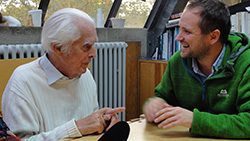
Frei Otto and Tomás Saraceno, Nov. 2014
Frei Otto’s central ideas circle around the creative powers of nature, the ephemeral, the reduced, architecture on the verge of the immaterial. Nonetheless, he does not lift off into the orbital as Tomás Saraceno does today. Although Otto’s inventiveness and research address light, load-bearing structures—membranes, cable nets, lattice shells, and pneumatic structures, his interests focus above all on an environmentally compatible, energy-saving, light, mobile, and flexible architecture on earth—the roof landscape of the Olympic Stadium of 1972 as probably the structure most well known in Germany. Besides the dissemination of his late legacy, “The net of the living Gestalt”, in word and image, within the framework of large image panels, his theoretical, sculptural working hypotheses are also on show.
Christine Kanstiger expands 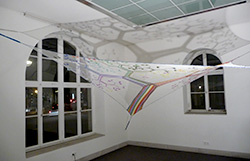 the models of light-weight structures with the installation of a four-point net that casts colourful shadows: “Verzweigungsstudie auf einer doppelt gekrümmten Vier-Punkt-Minimal-Fläche”. the models of light-weight structures with the installation of a four-point net that casts colourful shadows: “Verzweigungsstudie auf einer doppelt gekrümmten Vier-Punkt-Minimal-Fläche”.
Christine Kanstinger: Farbiges Schattennetz
(2014)
Via Lewandowsky and Ivo Wessel (art collector and app developer) investigate the collapse of the spontaneous, unexpected actions, immediacy, and hence of vibrancy with various artistic media, and image and sound elements. Take a stand in life: it is impossible to avoid the surprises offered by the digital world of the Internet. Artistic film essays, videos, and apps produced using sophisticated montage techniques provide a perceptive analysis of the dizzying speed (circulary flux), with the images and wide range of information assembled, transformed, and burst open.
This experiment is enriched and broadened with a ‘construed situation‘: “this is exchange” by Tino Sehgal. Already presented in the German Pavilion at the Biennale in Venice in 2004 (Golden Lion of the Venice Biennale, 2013), this work, the most explicit one with respect to Sehgal’s examination of economy and a culture of the market. Formerly a student at the Goldberg Gymnasium (secondary school) in Sindelfingen, Sehgal wanted to work with a group of current students at his former school.
The This Art ∞ ∞ Generation APPs project spans the range from ‘classic’ conceptual art to the contemporary communication worlds of Generation APPs.
ibk
|

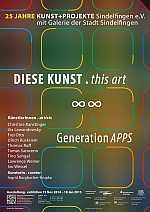 <Poster (pdf)
Catalogue>
<Poster (pdf)
Catalogue> 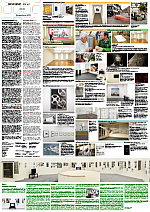
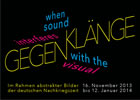

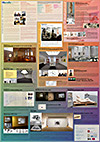
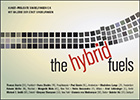

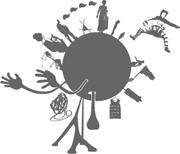


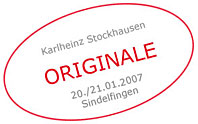




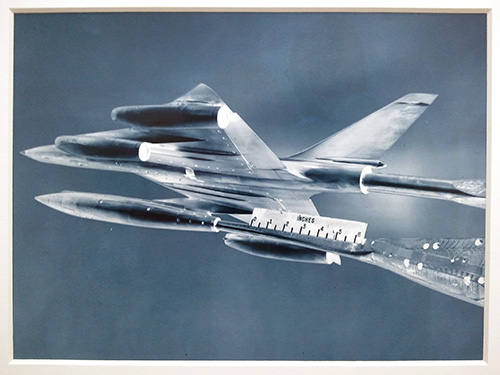




 the models of light-weight structures with the installation of a four-point net that casts colourful shadows: “Verzweigungsstudie auf einer doppelt gekrümmten Vier-Punkt-Minimal-Fläche”.
the models of light-weight structures with the installation of a four-point net that casts colourful shadows: “Verzweigungsstudie auf einer doppelt gekrümmten Vier-Punkt-Minimal-Fläche”.